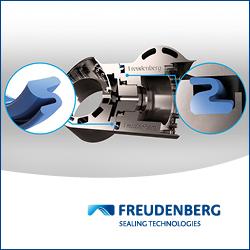Industrial Robotics Set to Hit $39 Billion by 2035, Driven by AI, Automation, and Industry Demand
Roots Analysis projects the global industrial robotics market to grow from $17.6B in 2024 to $39B by 2035. This growth reflects a broader shift toward smart automation and increased demand for efficiency and flexibility across sectors.
Industrial Robotics Market Poised for Long-Term Growth, Says Roots Analysis
There's no denying it—robots are no longer just a futuristic idea; they're now an everyday reality in manufacturing, logistics, and even mid-sized businesses looking to stay competitive. In its latest report, market intelligence firm Roots Analysis estimates the industrial robotics market will grow from $17.6 billion in 2024 to over $39 billion by 2035, at a compound annual growth rate (CAGR) of 7.49%.
That's a serious leap, and it aligns with what we've been hearing and seeing across the industry. Automation isn't just a nice-to-have anymore—it's a business imperative. Companies are under pressure to do more with less, meet increasingly customized demands, and build resilient operations that can weather unpredictable global challenges.
We're not just talking about robots doing the heavy lifting anymore (though they still do that brilliantly). What's changing is how intelligent these machines are becoming. The integration of AI, computer vision, machine learning, and real-time data processing is allowing robots to not just follow instructions—but make decisions, adapt, and work safely alongside people.
This is especially true with the rise of collaborative robots, or cobots. These machines aren't locked away in cages. They're working side by side with technicians, assembly line operators, and warehouse staff. And they're being embraced not just by global giants, but also small and mid-sized manufacturers who are realizing that automation doesn't have to mean massive capital investment.
Roots Analysis notes a growing trend in modular systems as well—robots that are flexible and reprogrammable, built to adjust with product lines and not become obsolete every time there's a shift in production.
Globally, adoption is accelerating across the board. We continue to see strong innovation coming out of Japan, Germany, and the U.S., but Asia-Pacific and Latin America are stepping up with serious investments in robotics infrastructure and automation training.
The conversation is also starting to shift toward sustainability. Companies are asking: how can we reduce waste, use less energy, and still maintain output? Robots are part of that answer. Smart automation can reduce scrap, optimize energy use, and create more consistent production cycles—all of which contribute to a smaller environmental footprint.
If you're in the industry, you're probably already feeling the pressure to adopt or expand your robotics capabilities. This report just puts numbers behind what we already know—robots are here to stay, and the smartest investments are the ones that prepare for tomorrow's challenges, not just today's.
Featured Product

IP Seals for Robots
Freudenberg Sealing Technologies' IPRS (Ingress Protection Seals for Robots) provides reliable protection for robotic systems operating in harsh environments. Designed to prevent dust, moisture, chemicals, and wear from compromising performance, IPRS extends service life and reduces maintenance. The adaptive Z-shaped geometry ensures sealing integrity under continuous motion, making it ideal for high-speed automation and outdoor applications. Manufactured with high-performance elastomers such as Fluoroprene XP and EPDM, IPRS offers exceptional resistance to lubricants, cleaning agents, and extreme temperatures. This makes it the perfect solution for six-axis robots, SCARA robots, AMRs, AGVs, and cobots.
With its low-friction design and durable materials, IPRS enhances energy efficiency and operational reliability in industrial and autonomous robotics. Learn more about our IPRS Seals
